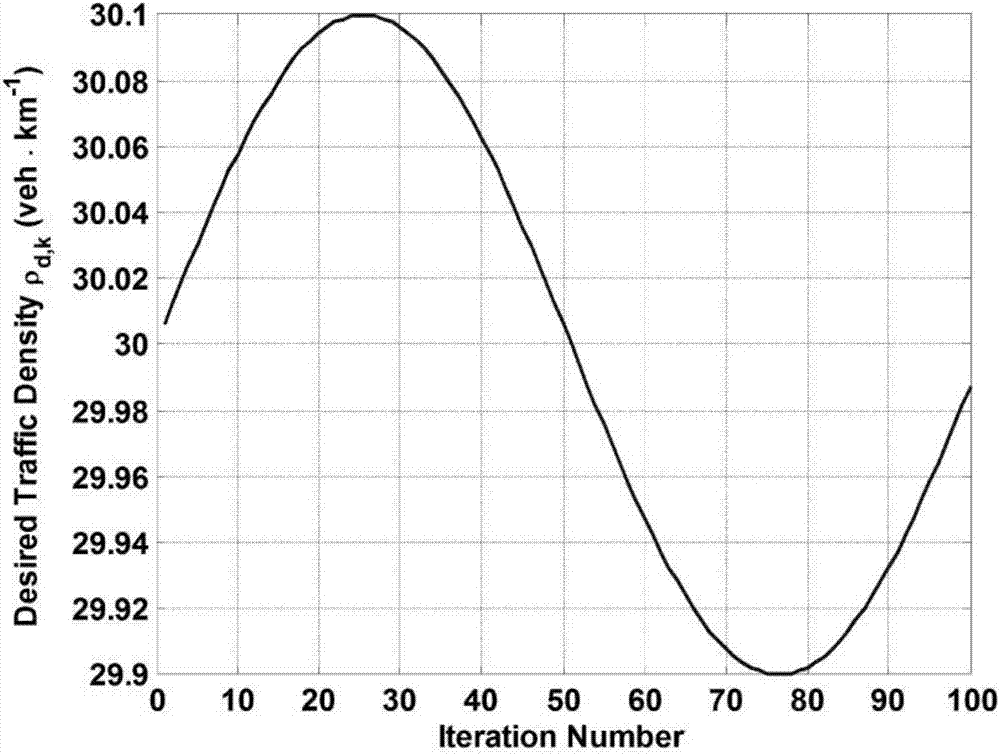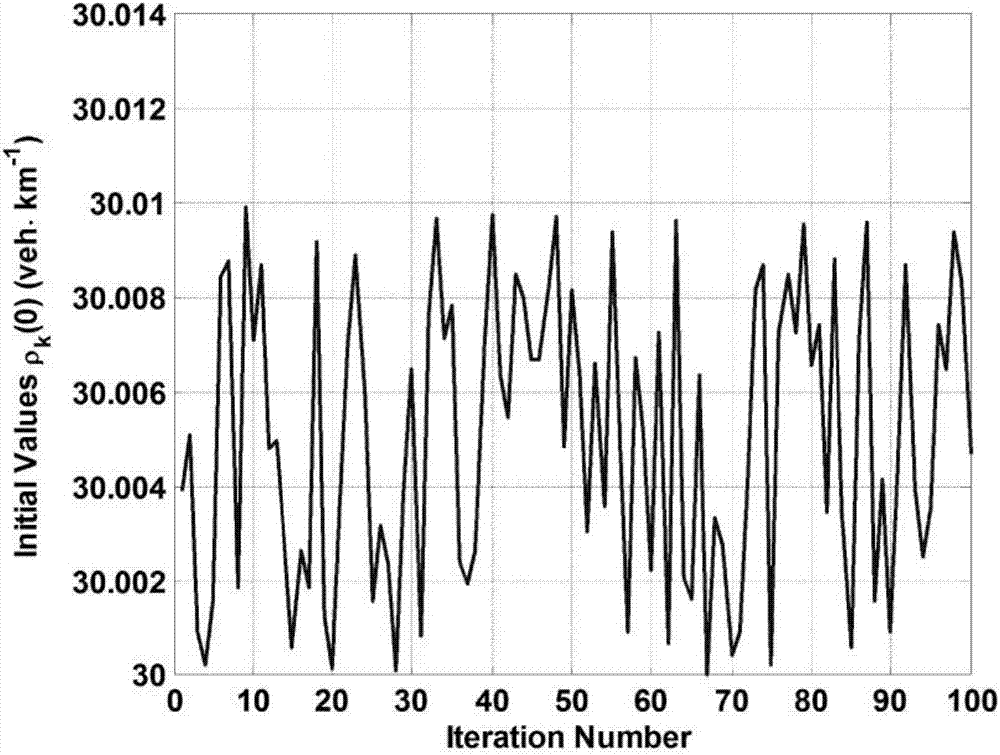Iterative dynamic linearization and self-learning control method of express way traffic system
A traffic system and learning control technology, applied in the field of iterative dynamic linearization and self-learning control, can solve the problems of poor transient response performance and repeated target tracking trajectory.
- Summary
- Abstract
- Description
- Claims
- Application Information
AI Technical Summary
Problems solved by technology
Method used
Image
Examples
Embodiment Construction
[0058] The present invention will be further described below with reference to the accompanying drawings and embodiments.
[0059] like figure 1 As shown, the expressway traffic system includes a single-lane expressway, each segment having an on-ramp and an off-ramp. Its spatial discrete traffic flow model is shown in the following equations (1)-(4).
[0060]
[0061] q i (t)=ρ i (t)v i (t), (2)
[0062]
[0063]
[0064] Among them, h is the sampling time interval; t refers to the t-th moment, t∈{0,1,∧,T}; i∈{1,∧,I N} refers to the ith section of the expressway; I N is the total number of segments; τ, v, k, l, m are constant parameters; ρ i (t) represents the traffic flow density of the i-th section of the expressway at the t-th time; v i (t) represents the average speed of the i-th section of the expressway at the t-th time; q i (t) represents the traffic flow of the i-th section of the expressway at the t-th time; r i (t) represents the on-ramp traffic fl...
PUM
 Login to View More
Login to View More Abstract
Description
Claims
Application Information
 Login to View More
Login to View More - R&D
- Intellectual Property
- Life Sciences
- Materials
- Tech Scout
- Unparalleled Data Quality
- Higher Quality Content
- 60% Fewer Hallucinations
Browse by: Latest US Patents, China's latest patents, Technical Efficacy Thesaurus, Application Domain, Technology Topic, Popular Technical Reports.
© 2025 PatSnap. All rights reserved.Legal|Privacy policy|Modern Slavery Act Transparency Statement|Sitemap|About US| Contact US: help@patsnap.com



